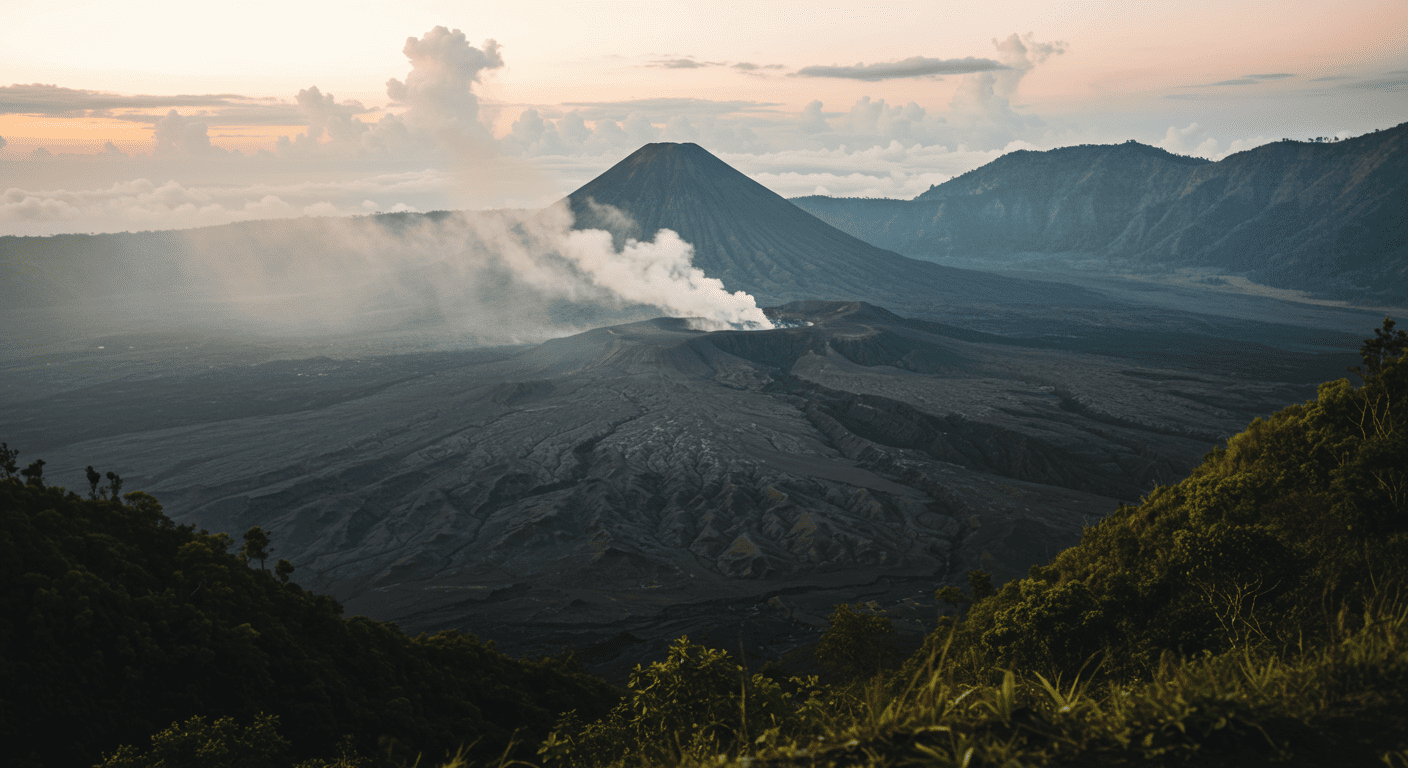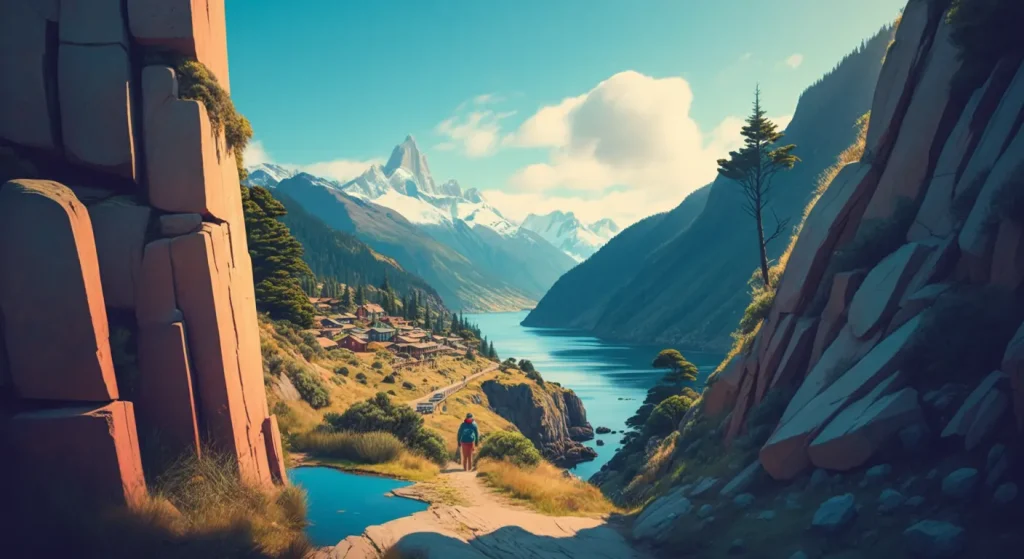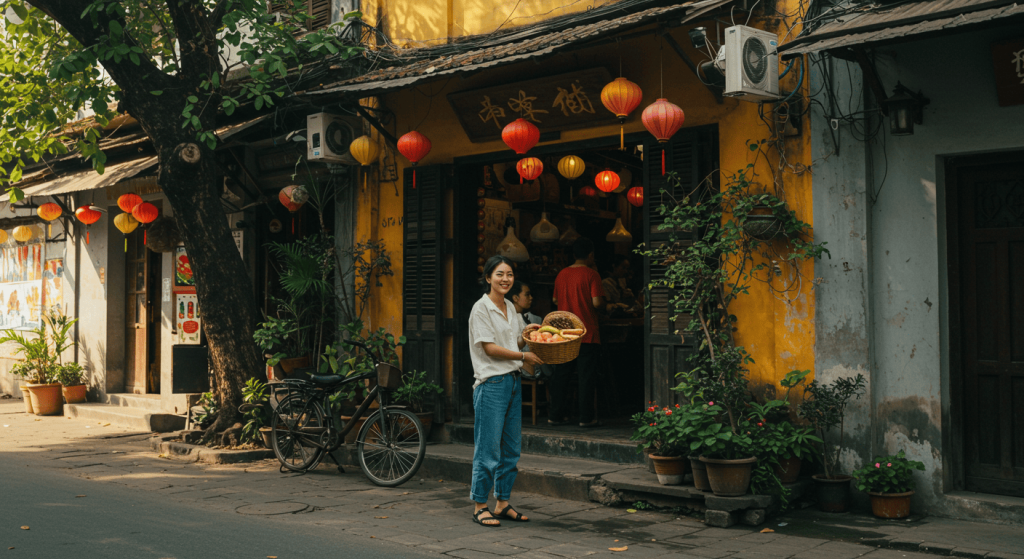
Indonesia, famous for its beautiful beaches and lush green rainforests, hides a fiery secret beneath its surface: active volcanoes and stunning lava fields. These surreal landscapes offer a thrilling challenge, attracting travelers brave enough to explore their raw beauty. But keep in mind, lava fields demand caution, preparation, and respect for nature’s might. If you’re looking for more than just a relaxing beach vacation, venturing to Indonesia’s intriguing volcanic terrains might be your next dream trip. Before lacing up your hiking boots and grabbing your camera, dive into these incredible journeys through Indonesia’s lava fields that most travelers—and even locals—avoid attempting.
1. Mount Merapi’s Fiery Summit Exploration
Mount Merapi, located in Central Java, holds the record as Indonesia’s most active volcano. Climbing this mountain isn’t a stroll in the park—Merapi erupts every few years, making it essential to plan carefully. Hiring a knowledgeable local guide is highly advisable since volcanic activity can change swiftly.
The trek starts at the village of Selo, about an hour’s drive from Yogyakarta. The ascent is demanding, typically taking around 5-7 hours. Wear sturdy hiking boots, carry plenty of water, and bring layers of clothing to handle shifts in temperature. The sight at the summit at sunrise is worth every exhausting step—the stunning volcanic landscape sprawling beneath clouds tinged gold and crimson is breathtaking. Plan your hike with reputable local trekking operators who constantly monitor volcanic alerts.
2. Crossing East Java’s Majestic Ijen Crater
Nestled in East Java, Ijen Crater is famous for its surreal blue fire phenomenon—visible only in the pre-dawn darkness due to burning sulfur gases. A midnight hike is challenging yet rewarding, requiring preparation: a sturdy flashlight, face mask for sulfur fumes, and gloves for protection against sharp volcanic rocks.
From Banyuwangi, the trip to the crater takes roughly an hour’s drive before starting the hike. The hike itself lasts about two hours to reach the crater rim. Hire local sulfur miners, who double as guides, for firsthand insights and safety tips. Be sure to maintain a safe distance from sulfur vents and wear protective gear. Witnessing the ghostly blue flame flickering against the darkness is genuinely mesmerizing and unlike anywhere else.
3. Mount Bromo’s Ash Desert Adventure
Mount Bromo in East Java is renowned for its spectacular sunrises, but it’s the sea of black sand that surrounds it that truly challenges the boldest travelers. Known as “Sand Sea,” this barren expanse formed by volcanic ash presents a striking lunar-like landscape that stretches endlessly.
The best way to explore the Sand Sea is by Jeep or on horseback—both easy to arrange in Cemoro Lawang village. Wear a scarf or mask and sunglasses to guard against volcanic dust kicked up by winds and Jeep tires. Make sure to leave early—between 3:00 and 4:00 am—to catch the stunning sunrise at Mount Penanjakan viewpoint before tackling the journey across the ash fields. Local guides frequently remind visitors to always stay within designated safe areas, as fog can roll-in suddenly making visibility challenging.
4. Trekking the Lunar Trails of Mount Semeru
Java’s highest peak, Mount Semeru, at 3,676 meters tall, promises adventure and excitement. It’s an active volcano making it both alluring and dangerous simultaneously. Semeru’s hiking trek starts from Ranupani village, and a permit is mandatory, available at Bromo Tengger Semeru National Park offices.
The route typically takes two or three days, and preparation is crucial: sturdy tents, layers of thermal clothing, sufficient water, and food supplies should always be packed. Don’t underestimate the final tract—the summit ascent is a steep, loose scree slope, exhausting but exhilarating upon reaching the top. From this vantage point, you’ll see Java’s lush valleys and neighboring volcanic cones stretched beneath you. Experienced hikers emphasize hiring qualified guides since monitored volcanic activity can be unpredictable.
5. Mount Agung’s Sacred Lava Trails in Bali
On the island of Bali, Mount Agung’s sacred slopes are both spiritually significant and geologically stunning. Balinese people revere Agung as their spiritual center, and journeys through its lava fields are usually approached cautiously and respectfully—even being avoided at times due to intensified volcanic activity.
Start your climb in Besakih, famed for the UNESCO-protected temple complex. Agung’s ascent often begins at midnight, allowing climbers to experience sunrise from the summit. Agung’s lava fields, rugged trails, and steep ascents demand excellent physical condition and preparation, including durable hiking shoes, sufficient hydration, and weatherproof gear.
Remember to observe local customs and etiquette. Hiring a Balinese guide is strongly recommended since they understand local terrain and cultural sensitivities. They’re also familiar with evacuation procedures if activity increases unexpectedly. From the summit, if the sky is clear, prepare to be amazed by panoramic views encompassing the entire island, from lush terraced fields to shimmering coastlines.
Essential Practical Tips for a Safe and Enjoyable Adventure
Traveling through volcanic landscapes requires extra preparation and awareness. Follow these practical guidelines to ensure your journey remains thrilling rather than risky:
- Always check volcanic activity updates before setting off from Indonesia’s official volcanic activity monitoring agency (PVMBG website).
- Never venture alone—local experienced guides can help interpret environmental cues and ensure safety.
- Invest in high-quality trekking boots, gloves, masks, and weather-resistant gear.
- Carry sufficient water, as the terrain will leave you thirsty and dehydrated faster than you realize.
- Respect volcanic landscapes; don’t disturb natural formations or litter trash. These landscapes can change quickly due to eruptions or weather alterations.
- Carry personal identification and emergency contact information for quick referencing in case of an accident.
Local Wisdom: Respecting and Learning from the Community
Indonesians who live near volcanoes have developed their unique wisdom around predicting eruptions and living harmoniously with active landscapes. Befriending locals and listening to their experience can significantly enhance your trip.
For example, villagers around Mount Merapi use birds fleeing the forest as a sign of impending eruptions. Balinese communities around Mount Agung rely on spiritual signals, carefully observing ritual prayers for clues about natural conditions. Learning from those who understand the land deeply can strengthen your connection with this unique and beautiful environment.
Handy Transportation and Accommodation Tips
Transportation throughout Indonesia is relatively easy with numerous options connecting urban centers and volcanic locations:
- Java offers extensive railroad links, especially around Surabaya and Yogyakarta. Trains are affordable and convenient for exploring lava fields, notably Bromo and Semeru.
- Bali is best navigated with hired private drivers or self-driven scooters/cars for quick access to Mount Agung’s starting points and Besakih temple.
- Always pre-arrange accommodation near trekking routes, and consider booking eco-friendly or homestay options for authentic local experience and shorter access to trails. Hostels or guesthouses close to trailheads provide comfortable places to recover from demanding hikes, and hosts can offer essential local tips.
Weather Considerations and Best Times to Visit
While Indonesia’s tropical climate makes traveling volcanic terrain possible year-round, the best hiking occurs during the dry season from late April through September. The visibility remains better, the skies clearer, and rainfall less frequent, all contributing to safer and more pleasant trekking conditions.
Plan carefully around Ramadan (fasting month) when services slow down, and festivals happen unpredictably. Always re-check your ascent plan close to departure and stay flexible in altering your route or schedule if conditions take a turn for worse.
Capturing Incredible Moments: Photography Tips
Indonesia’s lava fields offer once-in-a-lifetime photo opportunities:
- Carry lightweight gear, packing only essential lenses and accessories.
- For night photography around Ijen’s blue fire, use a tripod and exposure techniques.
- During sandstorms at Mount Bromo, protect your camera with plastic cases or wraps.
- Drone photography may require special permits especially around culturally significant areas such as Mount Agung.
Pack extra batteries—the cold mountain air drains battery juice faster than you’d expect. And remember, safety is paramount: always prioritize personal safety over capturing that perfect shot.
Wrapping Up Your Unforgettable Lava Field Expedition
Exploring Indonesia’s lava fields is an extraordinary adventure with risks undeniably present. Preparation, respect for nature and local communities, and a willingness to embrace unpredictability will make your journey ultimately rewarding. Embarking on one—or more—of these bold journeys is an adventurous blessing that connects travelers with the earth’s powerful, dramatic beauty.
Remember, volcanic adventures aren’t about pushing your limits recklessly but about responsibly exploring places few dare to visit. Embrace the rawness, be vigilant, stay prepared, and you’ll walk away with unforgettable memories of Indonesia’s fiery heart beating beneath your very feet.


